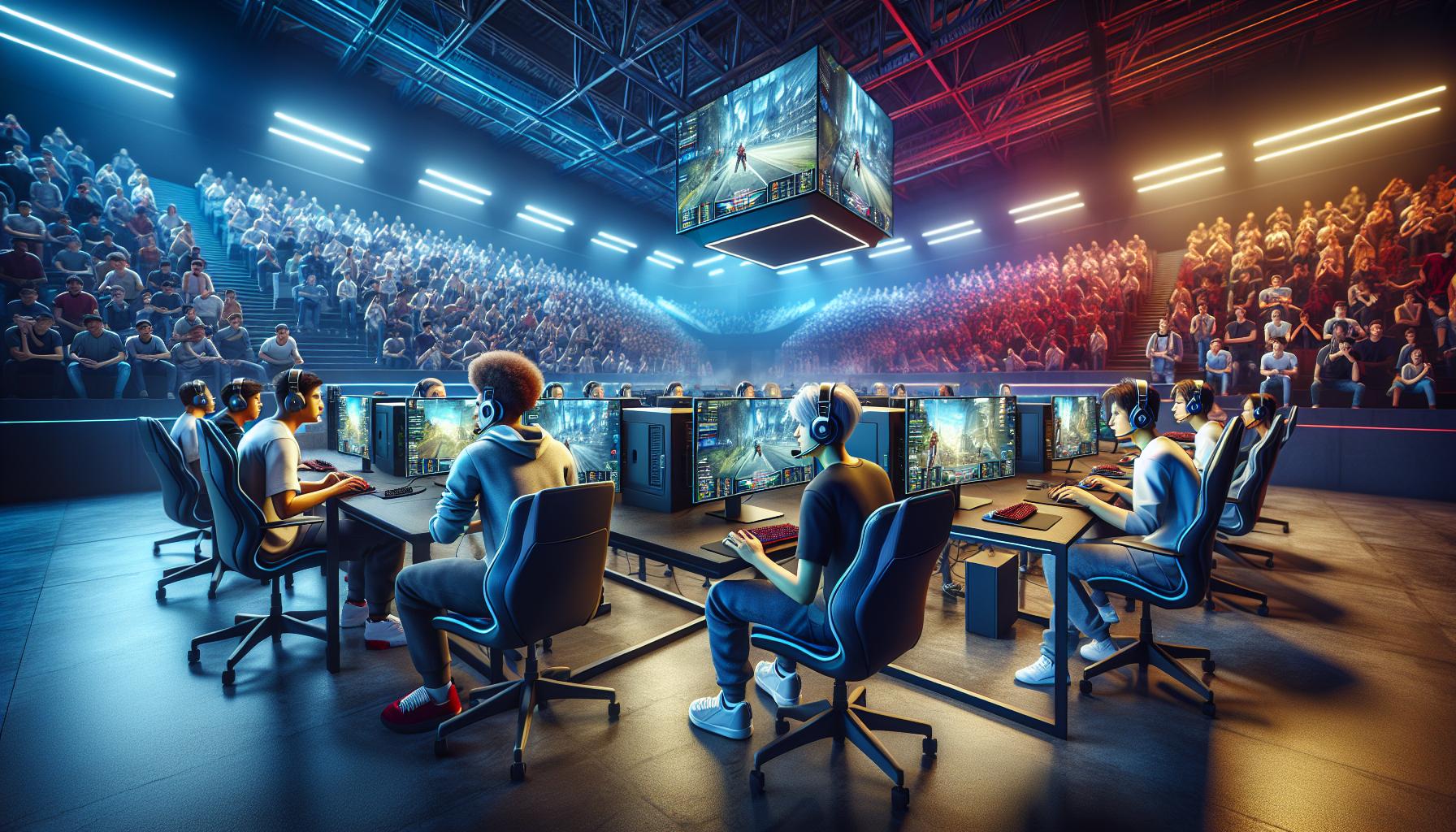Key Takeaways
- Importance of a Marketing Schedule: A well-structured marketing schedule is essential for organizing efforts, preventing missed opportunities, and enhancing team accountability.
- Key Components: Effective templates include a task list, deadlines, defined roles, marketing channels, and performance metrics to streamline campaign execution.
- Types of Templates: Weekly and monthly marketing schedule templates help teams target short-term and long-term goals, respectively, facilitating consistent planning and adaptability.
- Creating a Template: Establish clear marketing goals using the SMART criteria, choose an appropriate format (spreadsheet, calendar, project management tools), and prioritize tasks for effective planning.
- Benefits of Using Templates: They enhance organization and team collaboration, leading to timely campaign launches and improved marketing outcomes.
In today’s fast-paced digital landscape, a well-structured marketing schedule is crucial for success. It helps teams stay organized and ensures that campaigns launch on time, maximizing engagement and reach. Without a clear plan, businesses risk missing opportunities and falling behind competitors.
A marketing schedule template serves as a valuable tool, simplifying the planning process. It provides a framework for outlining tasks, deadlines, and responsibilities, making it easier to coordinate efforts across different channels. By utilizing a template, companies can streamline their marketing strategies and focus on what truly matters—connecting with their audience and driving results.
Understanding Marketing Schedule Templates
Marketing schedule templates serve as essential tools for organizing marketing efforts. They provide a clear framework for planning campaigns, ensuring effective collaboration among teams.
Importance of a Marketing Schedule
A marketing schedule streamlines workflows by defining timelines and responsibilities. It prevents overlapping tasks and highlights deadlines, enabling teams to stay on track. The structured approach enhances accountability, as each team member knows their roles and deadlines. Additionally, timely execution of marketing initiatives results in improved audience engagement and increased brand visibility. Businesses that implement a marketing schedule often see higher efficiency in project management and more successful campaign outcomes.
Key Components of a Marketing Schedule Template
- Task List: A comprehensive list of all marketing activities, including content creation, social media posts, and ad placements.
- Deadlines: Specific due dates for each task, ensuring timely completion and coordination.
- Roles and Responsibilities: Clearly defined assignments for team members, allowing for accountability in task execution.
- Channels: Identification of marketing channels such as email, social media, or website, where campaigns will be executed.
- Metrics: Measurement criteria to evaluate the effectiveness of campaigns, including engagement rates and ROI.
Using these components in a marketing schedule template allows businesses to create structured, strategic plans tailored to their goals.
Types of Marketing Schedule Templates
Various marketing schedule templates exist to cater to different planning needs. These templates enhance organization and streamline campaign execution through structured timeframes and clear responsibilities.
Weekly Marketing Schedule Template
A weekly marketing schedule template helps teams plan activities and strategies for a seven-day period. This template typically includes sections for daily tasks, campaign goals, and deadlines. It promotes consistency by outlining specific objectives for each day, allowing teams to focus on short-term targets while maintaining their long-term vision. Using a weekly template enables quick adjustments, ensuring responsiveness to changing market conditions and team dynamics.
Monthly Marketing Schedule Template
A monthly marketing schedule template provides a broader overview of marketing efforts across a month. This template includes sections for major campaigns, promotional events, and key performance indicators. It assists teams in aligning their monthly objectives with overall marketing strategies, ensuring consistent messaging and brand presence. By utilizing a monthly template, companies can track progress, evaluate successes, and pivot strategies based on analytics, leading to more informed decision-making.
How to Create a Marketing Schedule Template
Creating a marketing schedule template requires clarity around goals and the preferred format. This approach facilitates strategic planning and organized execution of marketing initiatives.
Identifying Your Marketing Goals
Identifying marketing goals shapes the structure of the marketing schedule template. Engagement targets, brand awareness objectives, and conversion rates provide clear direction.
- Set SMART Goals: Ensure they are Specific, Measurable, Achievable, Relevant, and Time-bound.
- Align with Business Objectives: Ensure marketing aims complement broader business strategies.
- Prioritize Goals: Assign priority levels to goals to focus resources effectively.
- Define Key Performance Indicators (KPIs): Determine metrics that will evaluate success for each goal.
Choosing the Right Format
Choosing the right format enhances usability and accessibility of the marketing schedule template. Consider these options based on team preferences and project needs.
- Spreadsheet Format: Use tools like Excel or Google Sheets for flexible tracking and easy updates.
- Calendar Format: Implement a calendar view for visual alignment of timelines and deadlines.
- Project Management Tools: Utilize platforms like Trello or Asana for collaborative planning and task assignments.
- Customizable Templates: Select templates tailored to specific marketing activities, allowing for personalization and adaptability.
Selecting the appropriate format aligns the marketing schedule with team workflows, streamlining project management efforts.
Benefits of Using a Marketing Schedule Template
Using a marketing schedule template significantly enhances a team’s efficiency and effectiveness. This tool simplifies planning efforts by providing structure and clarity, contributing to overall performance.
Improved Organization
Improved organization stems from a marketing schedule template’s ability to outline tasks, deadlines, and responsibilities. Teams gain clear visibility into what needs to be accomplished, when, and by whom. Tasks are systematically categorized, which prevents confusion and streamlines workflows. A detailed overview of marketing initiatives allows teams to prioritize tasks effectively. Organized marketing efforts can lead to timely campaign launches, ultimately boosting audience engagement and brand visibility.
Enhanced Team Collaboration
Enhanced team collaboration occurs when marketing schedule templates define roles and responsibilities explicitly. Team members understand their specific tasks and deadlines, reducing the potential for overlap and miscommunication. Collaborative efforts become more streamlined as everyone has access to the same information and timeline. With shared templates, teams can easily align their objectives and work symbiotically towards common goals. This cohesive approach not only increases productivity but also fosters a culture of accountability among team members, leading to more successful campaign execution.
Conclusion
A marketing schedule template is a game-changer for businesses aiming to enhance their marketing efforts. By providing a clear framework for planning and execution, it fosters organization and accountability within teams. With the right template in place, companies can streamline workflows and ensure timely campaign launches that resonate with their audience.
The benefits of using such templates extend beyond mere organization. They promote effective collaboration and help teams stay aligned with their goals. By leveraging these tools, businesses can not only improve their efficiency but also achieve greater success in their marketing initiatives. Embracing a structured approach to marketing planning is essential for driving results in today’s competitive landscape.







